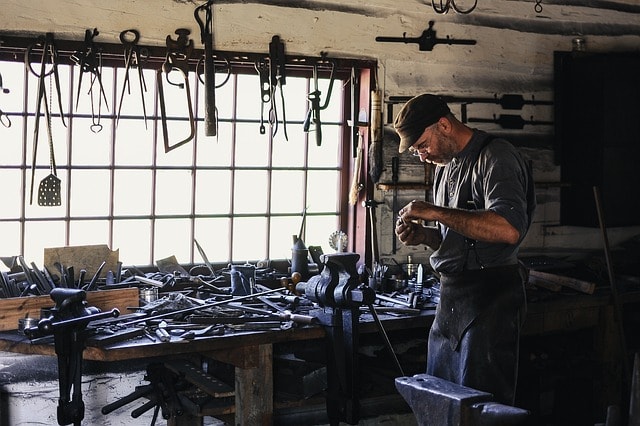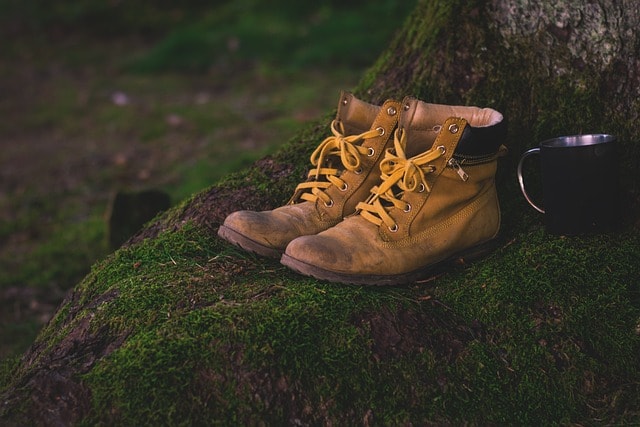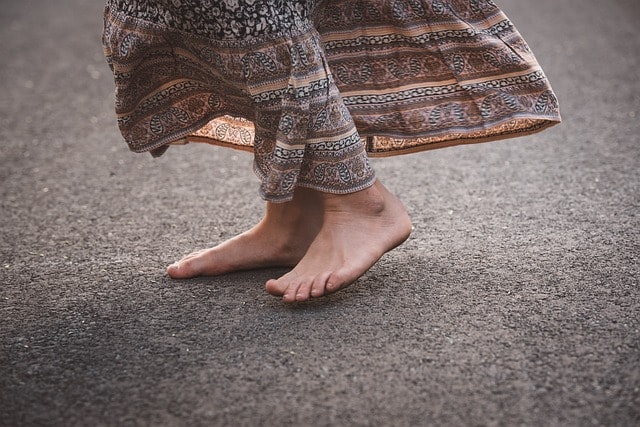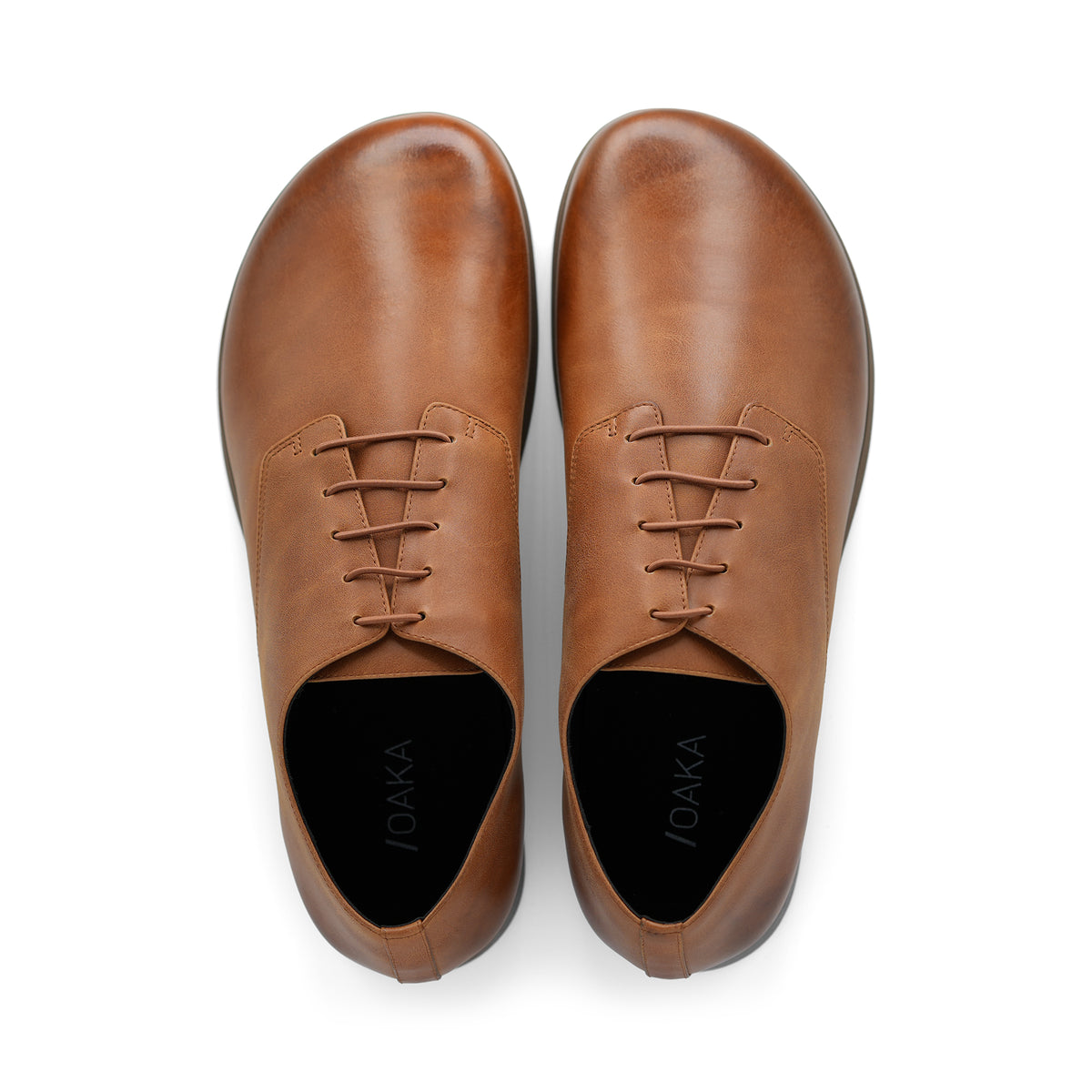Can you wear barefoot shoes at work? Absolutely. This article covers the best “barefoot shoe for work,” their benefits, and the top picks for a professional setting.
Key Takeaways
-
Barefoot shoes improve posture, foot health, and comfort by allowing natural foot movement, enhancing balance, and providing flexibility.
-
Top professional barefoot shoe picks include the Birkenstock QS 700, Gaucho Ninja Carpenter boot, Caterpillar Brode, Bearfoot Bruin, and Vivobarefoot Tracker FG.
-
When transitioning to barefoot shoes at work, start slow, use transitional footwear, perform foot exercises, and be patient to avoid initial soreness.
Why Choose Barefoot Shoes for Work?

Barefoot shoes offer numerous benefits, especially in the workplace. A key advantage is their role in improving posture. Traditional shoes often come with elevated heels and restrictive shapes, which can lead to poor posture and strain on your joints and muscles. In contrast, barefoot shoes encourage a more natural walking and standing posture, alleviating strain on your lower body. Some other benefits of barefoot shoes include:
-
Improved balance and stability
-
Strengthening of foot and leg muscles
-
Increased sensory feedback from the ground
-
Enhanced foot flexibility and mobility
Consider incorporating barefoot shoes into your work attire to experience these benefits and promote healthy feet and overall foot health.
They also significantly enhance foot health. Our feet were designed to stretch, flex, roll, and bend. However, conventional shoes can restrict these natural movements, leading to foot problems over time. Barefoot shoes allow your feet to move as they were meant to, reducing the risk of impact injuries and promoting stronger foot muscles.
The high level of comfort they offer is another strong selling point. Best barefoot shoes provide a unique blend of support and flexibility, making them some of the most comfortable shoes you’ll ever wear. They are designed to give you the barefoot feeling all the time, providing increased sensory feedback that can improve your proprioception and enhance your movement skills.
Additionally, including barefoot time in your daily routine conditions your soles and strengthens your foot muscles. This makes barefoot shoes not just a footwear choice but a tool for improving your overall foot health.
So, if you’re looking for shoes that combine comfort, health benefits, and professional style, barefoot shoes might just be the perfect fit.
Top Picks for Professional Barefoot Shoes

Given the numerous options available, selecting the ideal barefoot shoes for work can seem overwhelming. However, several models stand out for their blend of professional style and barefoot benefits. Let’s discuss some top-notch options.
First on the list is the Birkenstock QS 700. This work boot features:
-
Steel toe
-
Slip resistance
-
Electrical hazard protection
-
Zero drop
-
Spacious toe box
-
Size chart available for accurate fitting
It’s perfect for those who need safety features without compromising on the barefoot feel.
Next up is the Gaucho Ninja Carpenter boot, a handmade marvel that is zero drop, wide, and flexible. It boasts an ISO-approved steel toe and is fully barefoot, making it an excellent choice for those in industrial or construction settings who prefer xero shoes. Its craftsmanship and durability are often praised by users, though its high cost can be a deterrent for some.
For those seeking a safety-rated shoe, the Caterpillar Brode is a solid option. The product is equipped with a steel toe for protection and an anti-slip outsole for stability. It also provides electrical hazard protection for additional safety. However, its stiffer sole and narrower toe box may not be as comfortable as other minimalist options.
The Bearfoot Bruin boots, made from durable Crazyhorse leather, are another excellent choice. These zero drop, wide, flexible, and water-resistant boots are ideal for various work environments, from workshops to yard work. Additionally, Lem’s Waterproof Boulder boots are favored for their zero drop design, flexible sole, and waterproof features, making them a protective yet minimalist option.
Lastly, the Vivobarefoot Tracker FG and Belleville Mini Mil boots are worth mentioning. The Tracker FG is sturdy with a puncture-resistant outsole, suitable for light work but not safety-rated. The Belleville Mini Mil boots are appreciated for their wide toe box, flexible sole, and near-zero drop design, making them suitable for tactical and rugged conditions.
Features to Look for in Work-Appropriate Barefoot Shoes

Selecting barefoot shoes for work involves careful consideration of specific features to satisfy your comfort and professional requirements. Let’s unravel the details of these indispensable features.
Flexibility is paramount. Barefoot shoes should:
-
Allow your feet to move naturally
-
Have a flexible sole that enables your feet to bend and flex, mimicking the sensation of walking barefoot
-
Promote natural movement to strengthen your foot muscles and improve your overall foot health.
Sole thickness is another critical factor. The ideal barefoot shoe should have a sole thickness of 10mm or less. This thin sole provides the necessary ground-feel and flexibility, enhancing your sensory feedback and movement skills. The FeelTrue sole commonly found in barefoot work boots offers protection while still allowing for foot stimulation.
Wide toe boxes are essential for foot health and posture. They allow your toes to spread and relax, preventing discomfort and promoting better alignment. Barefoot shoes often feature a wider, foot-shaped toe box to facilitate this natural spreading.
Lastly, a zero-drop design is a hallmark of barefoot shoes. This means the heel and forefoot are at the same level, ensuring that your posture is not altered. This low-to-the-ground design improves balance, mobility, and agility, making barefoot shoes some of the most comfortable shoes you’ll ever wear.
Transitioning to Barefoot Shoes at Work
Switching to barefoot shoes at work may be a progressive journey, but with the appropriate strategy, it can be seamless and advantageous. Here’s some advice to facilitate your transition into barefoot footwear.
Start by walking barefoot for short distances, gradually increasing the distance over time. This will help condition your feet and prepare them for the minimalist shoes. Initially, you can begin wearing barefoot shoes for very short periods, such as 30 minutes per day, and gradually increase the wear-time as your feet adapt.
Consider using transitional minimalist footwear with a thicker sole before moving to true minimalist shoes. This can help your feet adjust to the reduced support and increased flexibility. Performing specific foot exercises, such as toe stretches and ball rolling exercises, can also aid in strengthening your foot muscles and making the transition smoother.
Using Correct Toes spacers can be particularly beneficial. These spacers help strengthen foot muscles and enable proper body weight distribution, making the transition to barefoot shoes easier. Additionally, you might need to relearn how to walk and run, shifting from a heel strike to a forefoot or whole foot strike, to better adapt to the barefoot movement.
Allow ample time for your feet and lower body to adjust to barefoot or minimalist shoes. It’s essential to be patient and listen to your body, as the transition will work muscles differently and may lead to initial soreness. With time and gradual adaptation, you’ll be able to enjoy the full benefits of barefoot shoes at work.
Styling Your Barefoot Shoes for the Office
Adapting barefoot shoes to your office wardrobe need not be a daunting task. By making the right selections, you can effortlessly incorporate them into your professional attire and relish the advantages of barefoot footwear.
Opt for designs that mimic traditional office shoe styles, such as a minimalist shoe. For instance, minimalist oxford brogues from Carets can appear dressy and stylish while still being zero drop and wide. These shoes provide the professional look you need without compromising on comfort and foot health.
Zero drop loafers are another excellent option for stylish and comfortable work flats. They offer a sleek appearance that fits well with professional attire and don’t pinch your toes, allowing for natural foot movement. Additionally, Crupon Sandals offer a stylish alternative to clogs that are flexible and flat, perfect for warmer days or more casual office settings.
When choosing barefoot shoes for the office, consider the following:
-
Material: Look for leather uppers to provide a polished look while maintaining the benefits of barefoot shoes.
-
Color: Choose a color that matches your professional attire.
-
Pairing: Pair your barefoot shoes with well-fitted pants or skirts to complete your professional look.
By considering these factors, you can ensure that you feel confident and comfortable throughout the day.
Real User Experiences
Insights from actual users can offer priceless understanding of the practical pros and cons of incorporating barefoot shoes in a professional environment. Let’s examine some user testimonials.
Justin found the Birkenstock QS 700 effective for work after replacing the arch support with NorthSole insoles, achieving a more barefoot feel as if the ground beneath his feet was more connected. This adjustment allowed him to enjoy the safety features of the shoe while benefiting from the barefoot experience.
Levi praised the Gaucho Ninja Carpenter boots for their craftsmanship, durability, and ability to be resoled, meeting all his work requirements. Despite their high cost, he found them worth the investment for their quality and performance.
Users have also shared positive feedback about the Vivobarefoot Tracker FG boots, appreciating their sturdy build, ankle padding, and puncture-resistant outsoles made of vegan materials. These features make them a good choice for light work, though they are not safety-rated.
The Bearfoot Bruin boots are praised for their durable Crazyhorse leather and gusseted tongues, making them ideal for yard work, construction, and workshops. Users find them flexible and comfortable, suitable for various tough environments.
On the other hand, the Reebok Soyay shoes have been critiqued for their thick sole and narrow, tapered toe box, which can be uncomfortable for some users despite the safety toe and zero drop design. Similarly, the Caterpillar Brode shoes, while valued for their steel toe and anti-slip outsoles, have a stiffer sole and narrow toe box compared to other minimalist options. It’s worth trying on a few pairs to find the best fit for your needs.
Summary
In summary, barefoot shoes offer a plethora of benefits for work, including improved posture, foot health, and comfort. They encourage natural foot movement and provide increased sensory feedback, enhancing your overall well-being. The top picks for professional barefoot shoes, such as the Birkenstock QS 700 and Gaucho Ninja Carpenter boots, combine safety features with the barefoot feel, making them suitable for various work environments.
Key features to look for in work-appropriate barefoot shoes include flexibility, thin soles, wide toe boxes, and zero-drop design. Transitioning to barefoot shoes requires patience and gradual adaptation, but the long-term benefits are worth the effort. Styling barefoot shoes for the office is also manageable with options that mimic traditional office shoe styles.
Real user experiences highlight the practical benefits and challenges of barefoot shoes, providing valuable insights for potential users. By considering these experiences, you can make an informed decision and enjoy the best of both worlds: comfort and professional style. So, why not take the plunge and experience the freedom of barefoot shoes at work?
Frequently Asked Questions
What are the main benefits of barefoot shoes for work?
Barefoot shoes can improve posture, foot health, and comfort by encouraging natural foot movement and providing better sensory feedback, making them a great option for work.
Which barefoot shoes are best for professional settings?
For a professional setting, top picks for barefoot shoes include Birkenstock QS 700, Gaucho Ninja Carpenter boots, Caterpillar Brode, Bearfoot Bruin, and Lem's Waterproof Boulder boots. Choose one that fits your style and comfort.
How can I transition to barefoot shoes at work?
Start by gradually increasing the time you spend walking barefoot or wearing minimalist shoes, while also doing foot exercises to strengthen your feet. This will help you transition to barefoot shoes at work.
What features should I look for in work-appropriate barefoot shoes?
When looking for work-appropriate barefoot shoes, prioritize flexibility, thin soles, wide toe boxes, and zero-drop design to support natural foot movement and ensure comfort.
How can I style barefoot shoes for the office?
You can style barefoot shoes for the office by choosing designs that mimic traditional office shoe styles like oxfords and loafers, which can be found from brands like Carets and Crupon. This will help you maintain a professional look while enjoying the benefits of barefoot footwear.
_____________
P.S. Try OAKA, our barefoot Derby style dress shoe that strengthens your feet and provides all day comfort.
---
Michael Plater is an authority on barefoot shoes, having spent years reviewing and testing products as well as modifying and ripping out soles to find the healthiest options.

